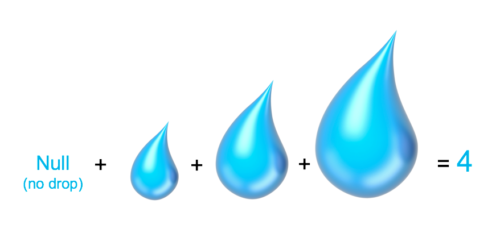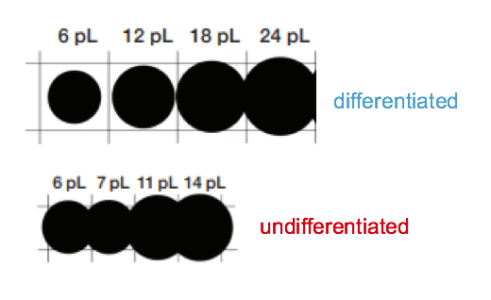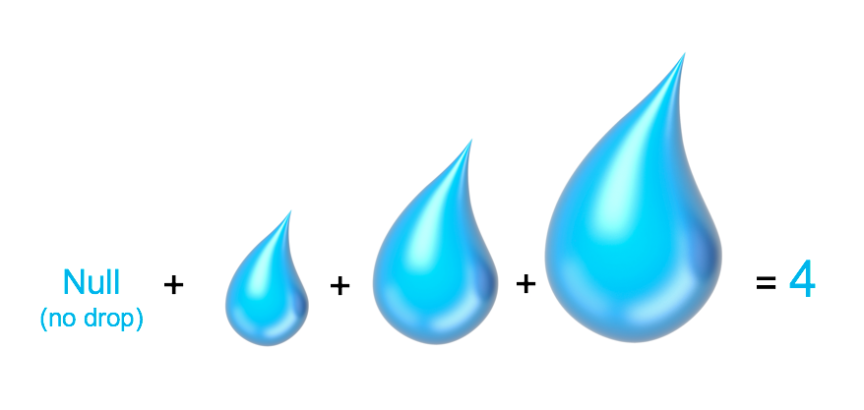Often when people talk about the capabilities of an inkjet printer, they will discuss print quality in terms of dots per inch and the number of colors available, but this is just a small slice of what goes into the discussion of inkjet print quality. To get at the heart of quality in the age of ever smaller print heads with more densely packed nozzles, we need to look at the gray areas. In fact, the literally gray areas known as grayscale (or greyscale for our readers across the pond.)
The term grayscale itself can be confusing. Grayscale from the perspective of a monitor involves shades of gray composed of only black and white. In the context of inkjet printing, grayscale is mostly composed of colors: cyan, magenta and yellow. There are also options for gray composed of black (K) when using gray component replacement (GCR) or under color removal (UCR) but we will save that discussion for another gray day. Today we are talking about the comparative ability to produce grayscale on production inkjet printers using CMYK.
The importance of Grayscale in Print Quality
Variable drop on demand print heads, also called grayscale heads, can place variably sized drops of ink onto media in a controlled manner. In contrast, binary print heads produce a fixed size of droplet. The placement of drops of variable volume produces a range of different dot sizes on the media. This control improves edge clarity, tonal range and simulation of continuous tone. So, OEMs with grayscale capabilities often talk about actual resolution (also called native or addressable resolution) as well as apparent resolution (sometimes called perceived or equivalent resolution). Non-standard terminology and varying definitions can be very confusing when comparing specifications from printers so we wanted to clear a few things up.
First we need to distinguish between the terms “gray level resolution” and “gray levels:”
Gray Levels simply refers to the number of drop sizes that a nozzle can produce including the “null drop” when no drop is jetted. So a printer that has 4 gray levels can produce 3 different sizes of drop plus null. A printer with 6 gray levels can produce 5 different drop sizes plus null. In the print engine, each gray value is assigned to a drop size which in turn tells the print head what volume of ink to jet (and when and where to drop it) with 0=no drop, 1=smallest drop, 3=medium drop, 4=large drop etc. The more drop sizes available, the finer the control of the printed image.

Gray Level Resolution refers to the number of grays that can be produced from a single print head in a single pass. It takes into account the print head’s gray levels, bit depth (color data per pixel) and the number of channels (colors jetted). It also takes into account firing in the process and cross-process direction. For example, with 4 gray levels, 4 channels (CMYK) and a bit depth of 8:
Multiply them together to get the total grays for the process direction (4 x 4 x 8 = 128) and do it again for the cross-process direction then add process and cross-process and you come up with 256 grays.
The printer described has a gray level resolution of 256, but only 4 gray levels. So, gray level is just one of the components in gray level resolution. But, sometimes when you ask an OEM for information on one, you get information that relates to the other instead – which will give you an idea of how poorly the terminology is understood by anyone who doesn’t live and breathe print quality analysis.
Getting back to apparent resolution, for a grayscale print head, it is based on the actual resolution (dpi), the number of gray levels available, as well as, the differentiation between the sizes of variable dots that make up the gray levels. It is also important to understand the size of the smallest of those drop sizes since smaller droplet sizes enable finer control. Some devices can consistently produce droplets of under 2 picoliters.
In addition, apparent resolution is impacted by the number of channels or colors used. Some devices use CMYK plus lighter tones of cyan or magenta to enable more gray levels with fewer drop sizes. This technique has been used successfully by grouping pairs of binary print heads in a high density nozzle configuration to simulate the results of a drop-on-demand print head.
There is no doubt that the print quality of devices using these grayscale techniques surpasses devices of the same actual resolution that are not. However, even with an understanding of the dpi, channels, gray levels and drop sizes used, it can be very difficult to understand how an OEM did the math that takes them from actual resolution to apparent resolution. That’s why we recommend that you consider all of the components that are being used to drive apparent resolution and look at them individually when evaluating printers rather than just comparing actual or apparent resolutions. Consider the following:
- Number of drop sizes

- Minimum drop volume in picoliters
- Maximum drop volume in picoliters
- Size of each variable drop (how differentiated are they?)
- Number of channels (could be CMYK or possibly also light cyan and/or magenta etc.)
- Drops per inch
Looking at these details will put you in a position where you understand what you are comparing relative to grayscale and resolution, however, you still need to see the printer in action to see how uniform the drops are and the accuracy of the printer’s (RIP’s) ability to place the dots at speed. There’s a lot of gray matter that goes into evaluating full color inkjet printing so pay attention to the details and learn everything you can about how apparent resolution is calculated for the devices you are considering.

